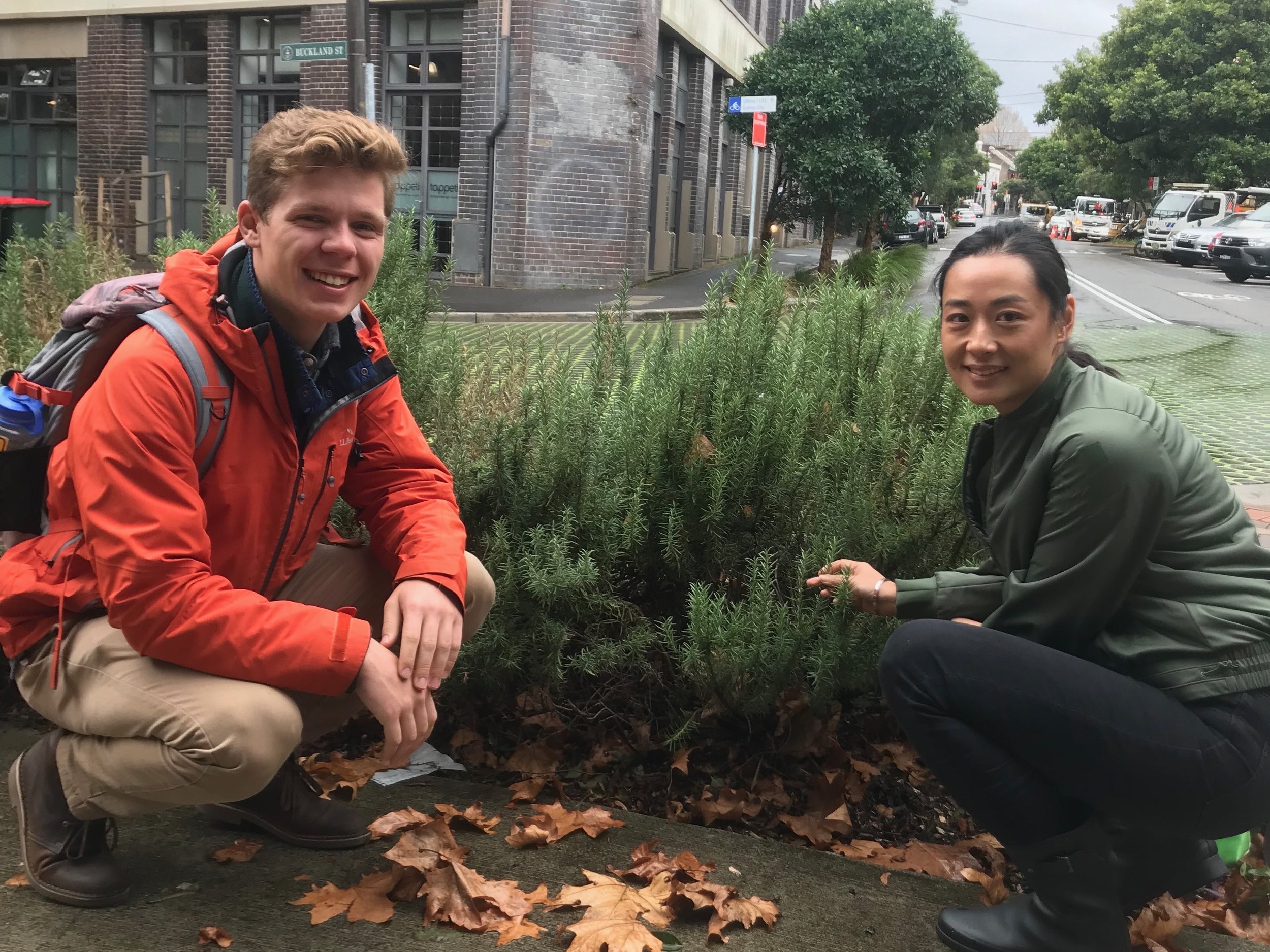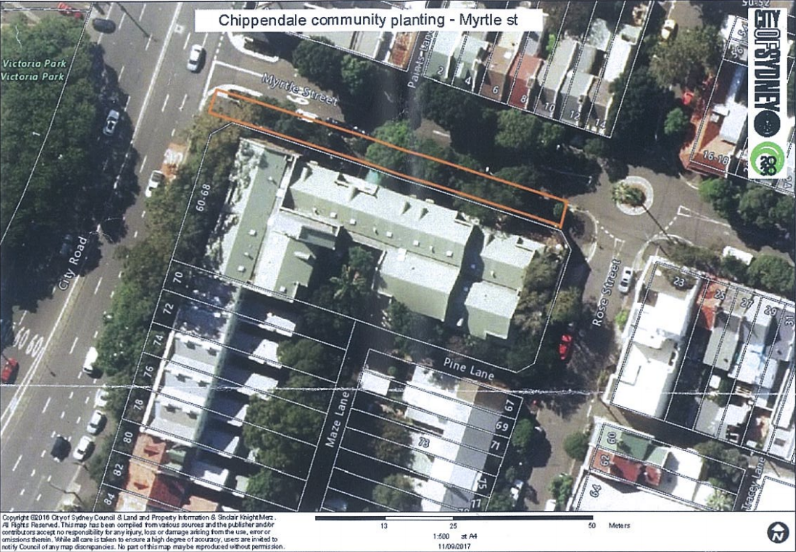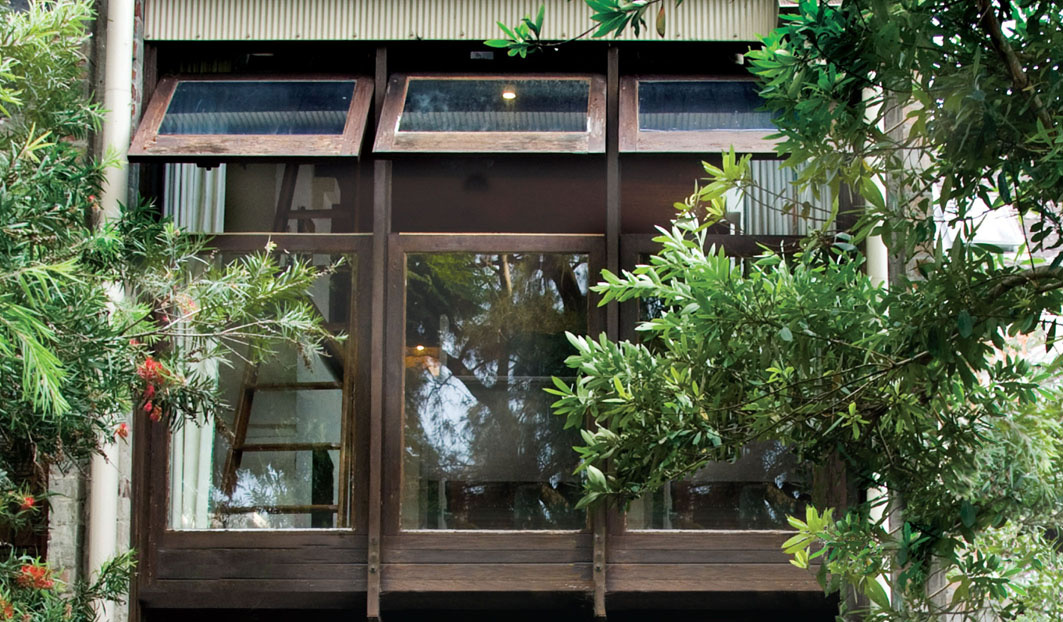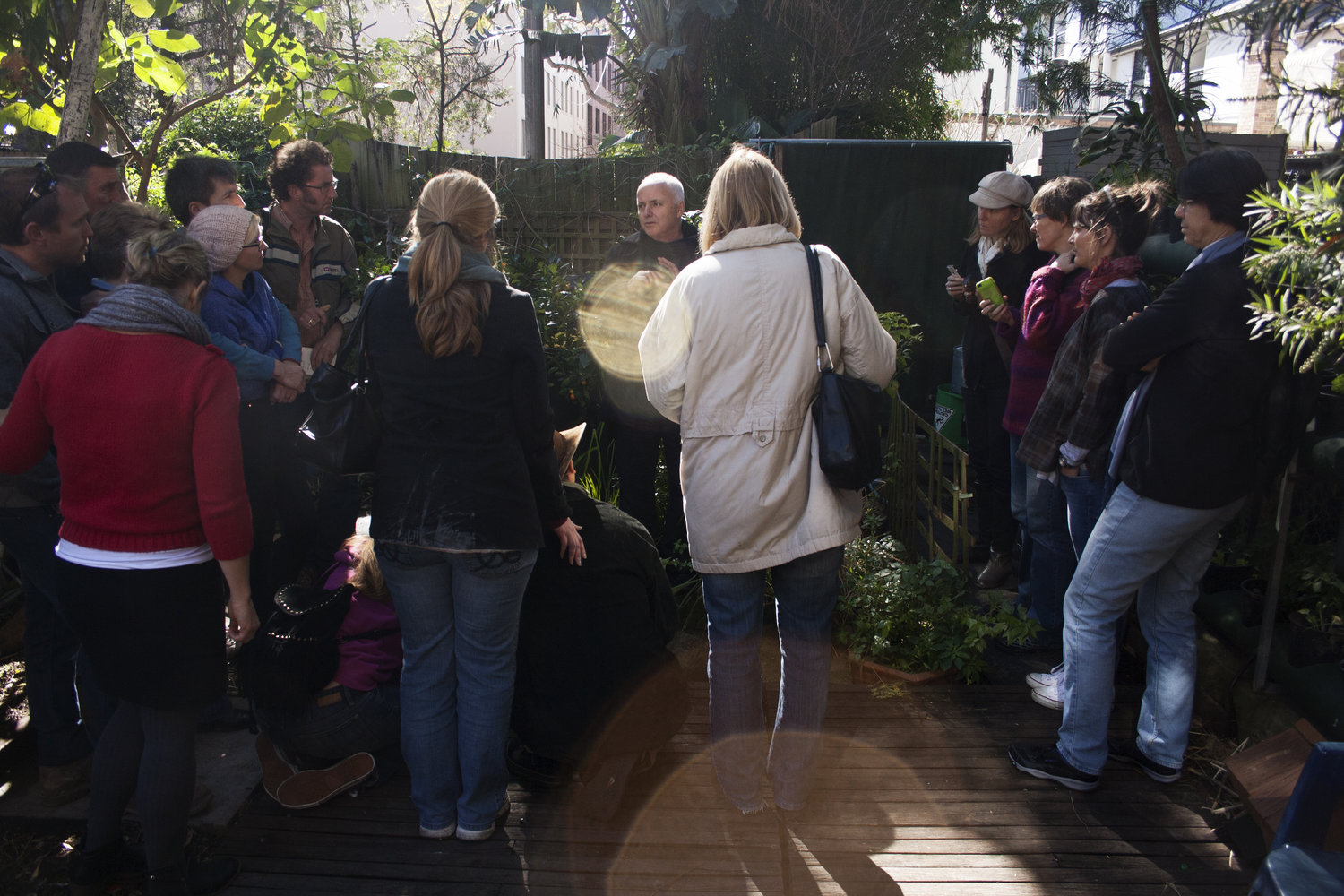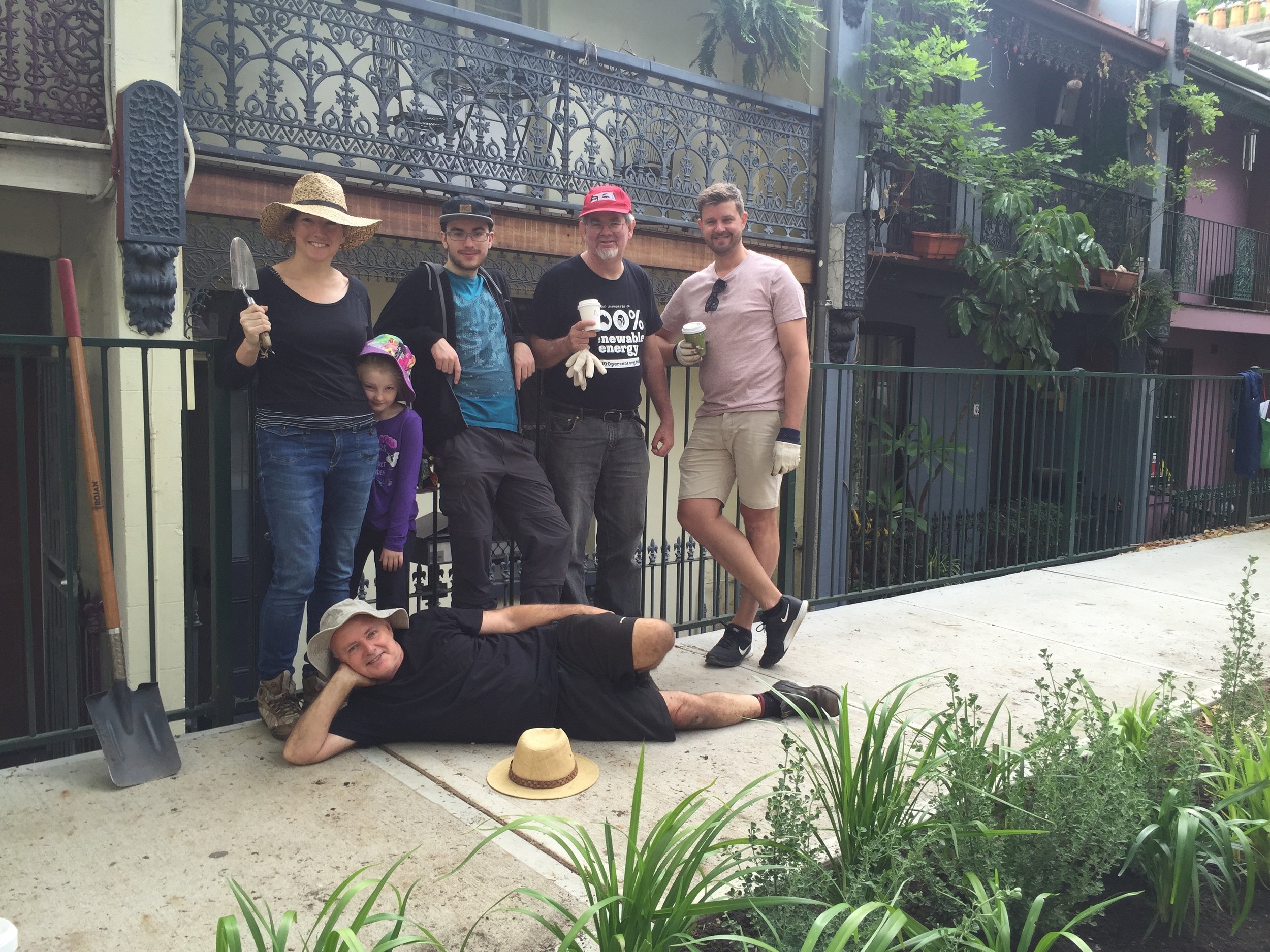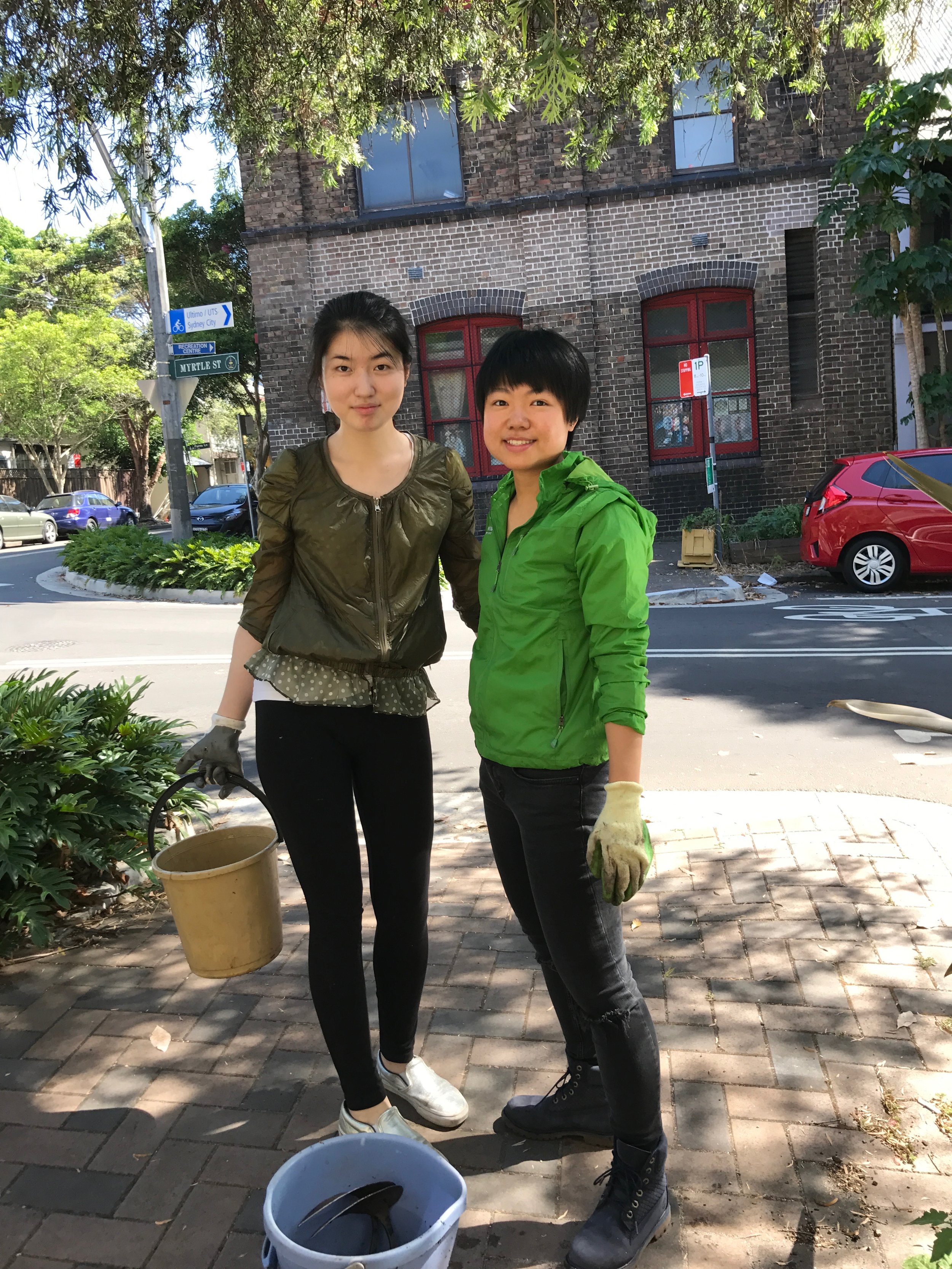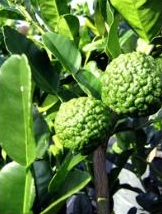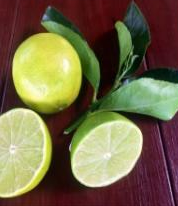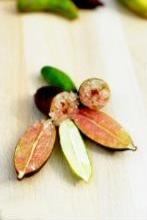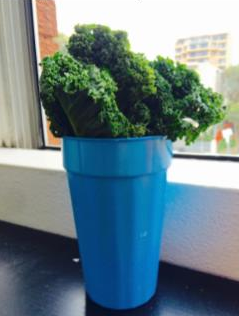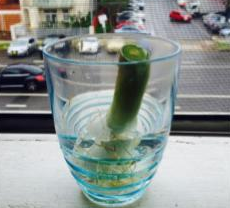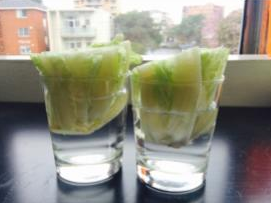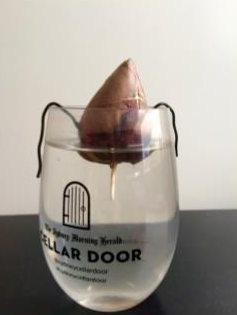New Business Tenants Join Chippendales Sustainability Movement
Guest Blog by Intern Edmund W.
“Do you cook? Here take these…”
I heard this from Michael Mobbs as we walked through Chippendale, a neighbourhood in Sydney he called home for 30+ years. He was in the process of plucking fresh bay leaves off a tree outside his famous ‘Sustainable House’ and handing them off to Lily W. who works with one of Chippendale’s newest business tenants.
The new business reached out to Michael as he is one of the contact points for the local gardening group, Sustainable Chippendale. They are the ones responsible for edible verge gardens, which contain the bay leaves mentioned above, rosemary, or other edible and sustainable plant life.
The group has a Facebook page, Sustainable Chippendale Active Gardeners, which currently has 230 members.
They’ve made a plan to make Chippendale sustainable: The Sustainable Communities Plan. The in-depth plan can be read at length here. It highlights the importance of sustainability in small suburbs, and the positive impacts that will be felt if steps are made towards sustainable living. Helping trees flourish for example will lead to cooler year-round temperatures, playing a part in a goal to reduce temps by ‘6º to 8º’ annually.
We saw the impact of community gardening on Chippendale as we walked through the streets; Nearly every road verge, the area separating a footpath from the street, was teeming with plant life, a result of a public gardening policy the community and Council implemented.
Low-Profile PVC Compost Pipe
On the side of the street where light wasn’t ideal, there are ornamental trees and perfumed plants such as lemon-scented tea tree, rosemary, and lavender. Plucking a sprig or pulling off a leaf is encouraged by the community as these gardens are designed to help people embrace the nature around them. However, where the lighting was more effective, productive plants had been put in. Citrus trees, such as lemons, limes, and mandarin could be seen growing in the parks and next to parked cars in road verges, providing residents of Chippendale with access to free fresh produce, grown in soil that was being supplemented by their own food waste in the form of compost.
These compost bins have been flawlessly integrated into Chippendales landscape. Even the largest ‘Turn-Over’ bin was painted by a local artist to become more of an art piece than a place to store decomposing food waste. On a smaller scale, what appear to be PVC drainage pipes used to service the Chippendale drain systems are actually low-profile compost bins. Simply unscrew the lid, deposit compost, and over time nutrients will be delivered to the soil via slots on the bottom of the pipe feeding the plants in the road verge.
Turn-Over Compost Bin
As a new resident to the Chippendale area, Lily W. met with Michael to become more involved in the neighbourhood’s sustainability initiatives. As the new business has grown, it developed a more global view of its own impact on environmental health, and in turn sustainability. They’ve made progressive decisions such as selling their products in glass bottles so customers will reuse their pumps, keeping one more piece of plastic out of Australia’s landfills and oceans.
As part of their steps to join Chippendale’s tight-knit sustainable community, the business is exploring greener methods of managing their food waste- primarily through use of composts bins similar to those mentioned above. By utilizing a compost bin for an office containing 16 employees, they will be keeping 1.8 tonnes of CO2 out of the atmosphere every 5 years, or a rate of 368kg/CO2 per year (HYDER REPORT - Waverley Council - Pg 22). Furthermore, they will be helping increase the soil health of green areas around their new offices. According to researchers, the introduction of organic matter via composting leads to healthier soil, which stimulates plant growth (pg. 58). Pairing this compost with the public gardening initiatives such as “Planting Days”, this sustainable management of waste will prove beneficial for the community as more compost is generated for planting.
Every bit counts when it comes to gardening and local food production. If you can generate food sustainably in a neighbourhood utilizing its natural rainfall and resources, then an impact can be felt on the larger scale. It is said that 2 eggs would require 200 litres of water to be produced, while a half kilogram of fruit would require 481 litres. By localizing that food production with fruit trees in road verges, and chickens in the backyard (as seen at the ‘Sustainable House’) a step can be taken in the right direction to preserve water and live a more sustainable lifestyle.
